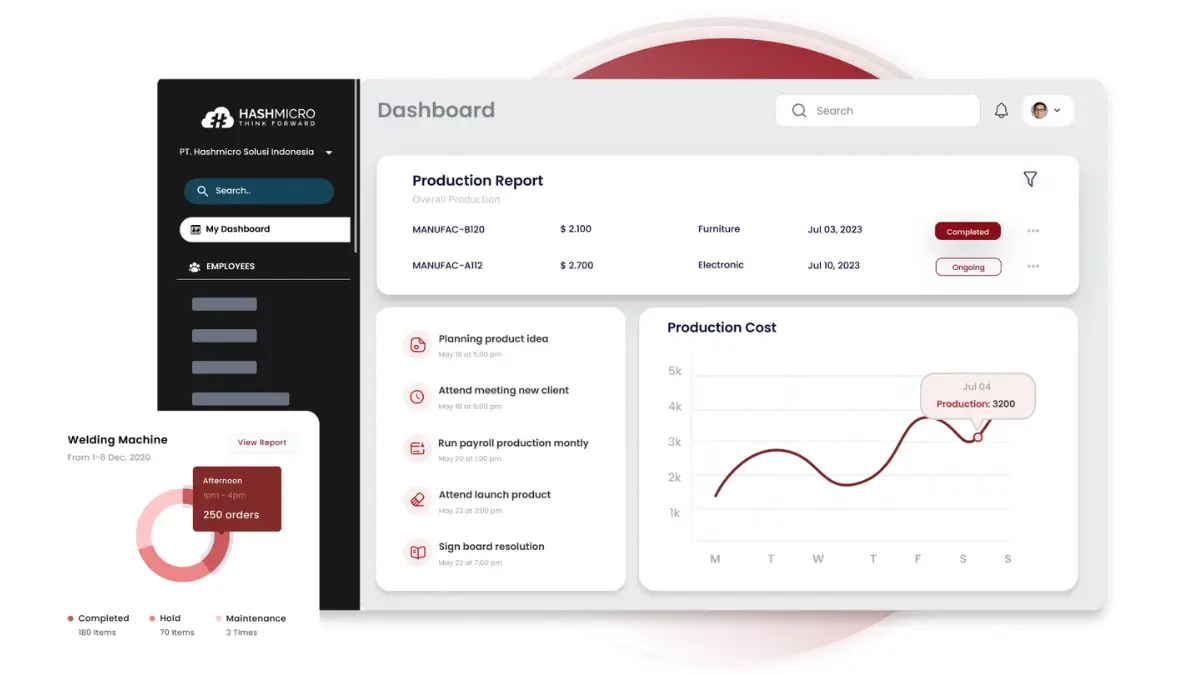Semiconductor manufacturing sits at the center of modern technology. Every chip inside a phone, car, or computer starts here. It’s a process where microscopic precision determines whether a product performs flawlessly or fails entirely.
From wafer preparation to packaging, every stage must be measured, monitored, and executed with near-perfect consistency. Even a tiny particle or slight temperature shift can affect thousands of chips on a single wafer.
To explain briefly, semiconductor manufacturing covers a series of tightly controlled steps that turn raw silicon into complex integrated circuits. But what else should manufacturers know about?
This article will walk you through what semiconductor manufacturing is, how it works, and why it’s complex and takes a long time to be done. Keep reading to find out!
Key Takeaways
|
What are Semiconductor Devices?
Semiconductors are materials that conduct electricity better than insulators but not as well as conductors. The most common semiconductor material is silicon, but others like gallium arsenide and silicon carbide are also used, especially for devices that need higher performance.
When made into chips, semiconductors can control electrical signals, store data, and carry out complex tasks. These chips are the main components inside many technologies we use today, from smartphones and computers to satellites.
What is Semiconductor Manufacturing?
Semiconductor manufacturing is the process of producing semiconductor devices; the tiny electronic components that power nearly all modern technologies, from smartphones and computers to cars and medical equipment.
It involves designing, fabricating, and packaging integrated circuits (ICs) made primarily from materials like silicon. The process happens in ultra-clean facilities called fabs (fabrication plants) and typically includes several key stages:
- Wafer fabrication – Pure silicon wafers are processed using photolithography, etching, doping, and deposition to build complex layers of transistors and circuits.
- Assembly and packaging – The finished wafer is cut into individual chips, which are then mounted, connected, and enclosed for protection.
- Testing and quality control – Each chip undergoes functional and performance tests to ensure reliability before shipment.
In short, semiconductor manufacturing transforms raw silicon into the cores of electronic devices through highly precise, nanoscale engineering.
Key Steps of Semiconductor Manufacturing
The process of turning raw silicon into a finished semiconductor chip is long, complex, and extremely precise. It involves six major stages: wafer preparation, pattern transfer, doping, deposition, etching, and packaging.
1. Wafer Preparation
The journey begins with a silicon wafer, the base material for semiconductor devices. This wafer is cut from a purified silicon crystal (called an ingot), then cleaned and polished until it has a flawless, mirror-like surface. This smooth surface serves as the substrate for building electronic circuits.
2. Pattern Transfer (Photolithography)
Next, a pattern is created on the wafer through a process called photolithography. A thin layer of photoresist (a light-sensitive material) is applied to the wafer’s surface.
A mask with a specific circuit design is then placed on top, and ultraviolet (UV) light is used to transfer the pattern onto the photoresist. The exposed parts are removed, leaving behind microscopic circuit pathways where transistors and other components will be built.
3. Doping
In this stage, impurities such as boron or phosphorus are introduced into selected areas of the wafer to modify its electrical properties.
This process, called ion implantation, accelerates ions to high speeds and embeds them into the wafer’s surface, creating p-type or n-type regions. These doped areas form the basis of the wafer’s transistors (the tiny switches that control electrical signals).
4. Deposition
During deposition, thin layers of materials like metals, oxides, or nitrides are added to the wafer. These films form insulating or conductive layers essential for building circuits.
Techniques such as Chemical Vapor Deposition (CVD), Physical Vapor Deposition (PVD), and Atomic Layer Deposition (ALD) are used to precisely apply these materials, often only a few nanometers thick.
5. Etching
After deposition, excess material is selectively removed through a process called etching. This step helps define the final shape and structure of the electronic components. Etching can be performed using wet etching (liquid chemicals) or dry/plasma etching (ionized gas).
6. Packaging
Once all the circuit layers are built, the wafer goes through testing to identify any defects. The functional chips are then cut out, mounted, and encased in protective packages.
These packages connect the chips to printed circuit boards (PCBs) and protect them from physical or environmental damage. The packaging and testing stage can take 8–10 weeks, involving electrical and functional validation to ensure high performance and reliability.
Duration and Complexity
Overall, semiconductor manufacturing is one of the most intricate industrial processes in the world.
A single wafer may undergo hundreds of processing steps—from cleaning, doping, and layering to patterning and testing—spanning 16–18 weeks for wafer fabrication alone. Every phase demands extreme precision, as even the smallest particle or error can render a chip unusable.

Common Challenges in Semiconductor Manufacturing
Below are some of the key technical and operational challenges faced by the semiconductor manufacturers worldwide.
1. Miniaturization
As chips continue to shrink, with features as small as 3 nanometers, maintaining precision becomes increasingly difficult. Each new generation demands advanced lithography methods and extreme accuracy across all stages of production.
2. Pattern Transfer
Achieving accurate pattern transfer is one of the toughest challenges in semiconductor production.
While technologies like Extreme Ultraviolet (EUV) lithography and multi-patterning enable the creation of incredibly fine patterns, they require high-cost equipment, complex calibration, and strict environmental control.
3. Doping Precision
Modern chips demand precise control over doping levels, as even slight variations in impurity concentration can alter a transistor’s performance.
Techniques such as molecular beam epitaxy (MBE) and chemical vapor deposition (CVD) offer greater control than traditional ion implantation, but they introduce new challenges in uniformity, cost, and process stability.
4. Packaging Innovation
Packaging is no longer just about protection; it directly affects device performance and energy efficiency.
Techniques like 3D packaging, fan-out packaging, and System-in-Package (SiP) enable more compact, high-performance chips but add complexity in thermal management, signal integrity, and manufacturing cost.
5. Cleanroom Requirements
Semiconductor fabrication requires ultra-clean environments, where even a single dust particle can ruin a chip. Maintaining cleanroom standards means controlling temperature, humidity, and static, as well as designing precision parts that resist contamination.
Future Trends in Semiconductor Manufacturing
As global demand rises and new applications emerge, the semiconductor industry is undergoing rapid transformation. Below are some of the key trends driving its next phase of innovation.
1. Advanced Pattern Transfer
New pattern transfer methods are behind today’s smaller chips. Techniques like Extreme Ultraviolet (EUV) lithography and multi-patterning let engineers print details just a few nanometers wide on silicon wafers.
EUV uses shorter light wavelengths to make finer lines, while multi-patterning splits one design into smaller ones to reach even tighter layouts. This is how modern processors fit billions of transistors into something smaller than a fingernail.
2. Precision Doping
Doping (adding tiny amounts of other elements to silicon) controls how electricity moves through a chip. Engineers now use materials like germanium, arsenic, and antimony in addition to boron and phosphorus to get better control. Techniques such as Molecular Beam Epitaxy (MBE) and Chemical Vapor Deposition (CVD) make the process cleaner and more precise.
3. Deposition Advancements
Deposition is how thin layers of metal or other materials are added to wafers. Updated methods like MOCVD, plasma-enhanced deposition, and roll-to-roll coating allow better control of these films. This step is key to building faster and more reliable chips.
4. Etching Innovations
Etching removes selected parts of a wafer to shape circuits. Older wet methods were rough; newer ones like Reactive Ion Etching (RIE) and plasma etching give sharp, controlled results. They can carve patterns only a few atoms deep without damaging nearby structures.
5. Advanced Packaging Technologies
Modern packaging affects how it performs. Techniques like 3D packaging, fan-out, and System-in-Package (SiP) let several chips stack or sit side by side in one compact setup. That’s how phones, EVs, and laptops keep getting smaller yet more powerful.
6. Automation
Robots now handle wafers, move materials, and check for defects. Combined with AI inspection systems, they make production more consistent and reduce the need for manual work. The goal is to avoid errors humans can’t spot at microscopic scales.
7. Sustainability Initiatives
Chipmaking uses huge amounts of water and energy, so companies are rethinking how they work. They’re recycling more materials, cutting waste, and designing fabs that use less power.
Optimizing Semiconductor Production with HashMicro
Semiconductor manufacturing is built on precision. A single misstep in materials, scheduling, or cost tracking can throw off an entire production run. That’s why having one system that ties everything together is now necessary.
HashMicro Manufacturing Software connects every stage of production, from raw material intake to finished wafers. The system links Bills of Material with project-level data, so every material used, every process step, and every cost is traceable in real time.
Managers can oversee production, analyze costs, and plan the next run easily. Whether you’re managing high-volume fabrication or small-batch R&D, HashMicro gives manufacturers the control and visibility needed to keep yields high and errors low.
Built to support complex, multi-stage manufacturing environments, HashMicro includes:
- Integrated BoM & BoQ – links Bill of Material with Bill of Quantity for accurate material references across projects.
- WIP & Finished Goods Management – tracks production flow from raw materials through work-in-progress to finished products.
- Production Cost Tracking – records costs for materials, labor, overhead, and subcontracting.
- Quality Check Integration – supports inspection of materials, WIP, and finished goods based on qualitative and quantitative parameters.
- Master Production Schedule (MPS) – organizes production planning according to forecasted demand.
- Manufacturing Gantt Chart – provides a detailed visual schedule for ongoing and planned production jobs.
Conclusion
Semiconductor manufacturing is a balancing act between precision and complexity, where one small deviation can mean massive losses. Every layer, every process, and every cleanroom standard must work in perfect harmony to create the chips that power our world.
That’s why many manufacturers turn to HashMicro Manufacturing Software, a system designed to manage production with the same precision as the products themselves. It helps you connect materials, costs, and production schedules in one place for an entire production process.
With HashMicro, production management becomes measurable, predictable, and consistent, built to match the precision that semiconductor manufacturing lives by. So, if you’re interested, book the free demo now and speak to our expert team!






























